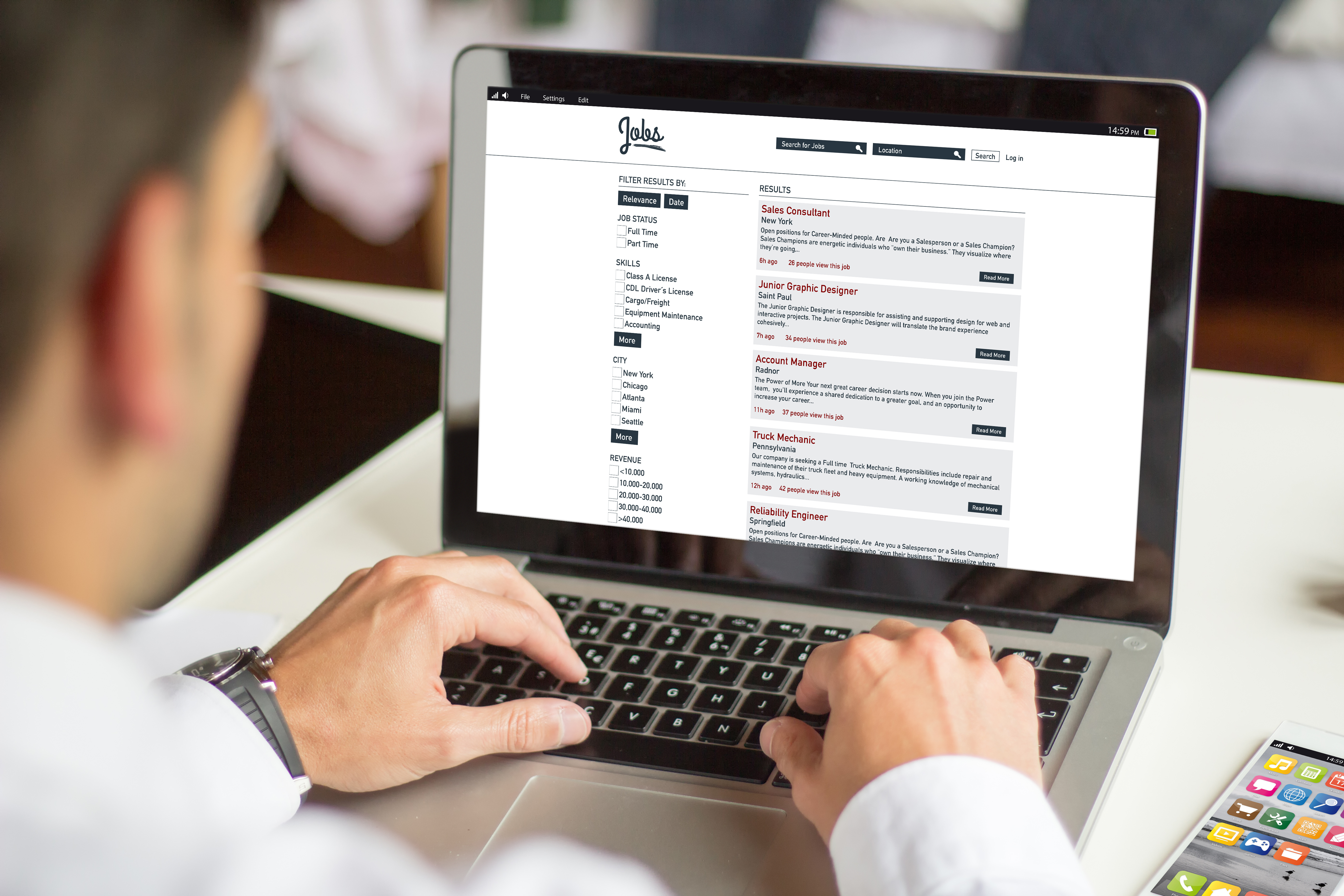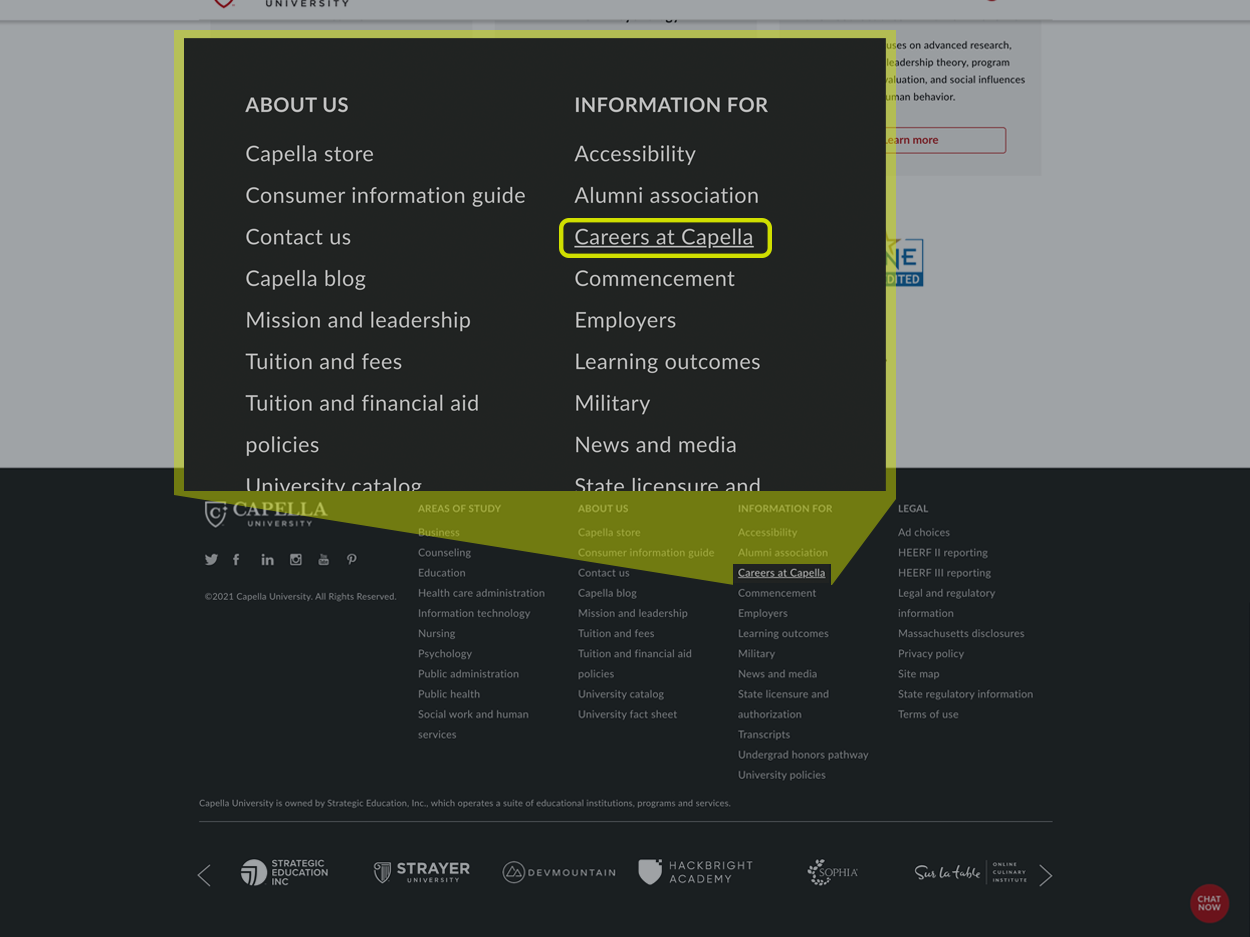In this lesson, you will consider what you need to land an interview and prepare for it. You will look at different job markets and where you can find them. You will also learn more about what you will need to do to prepare for and do well in an interview.
Specifically, this lesson will cover:
- Land a Job Interview
- Traditional Job Market
- Invisible Job Market
- Get Ready and Execute
- What You Need
- Elevator Pitch
- Skills in Action
1. Land a Job Interview
Before you can begin to prepare for a job interview, you need to land one. Years ago, that meant scouring the classifieds in a newspaper, but today that has all changed. With sites like LinkedIn and Indeed, you can browse and search thousands of job postings at once—anywhere in the world. While online job postings were a big shift in how people looked for jobs, now there are even more ways to find out what is available. You will need to be able to navigate all of these options to find the role that is right for you.
-
Finding the right job means taking the time to understand where to look. The more efficient and innovative you can be in your job hunt, the sooner you will be able to send in your application and, hopefully, get that call for an interview.
- 1a. Traditional Job Market
There is a
myriad job board sites you can visit to search for your dream role. What you see below is only a small sample of what is out there.

These job boards are considered to be a traditional way to search for openings. These sites were created so employers could post their jobs for potential employees to browse and apply. What started as a few sites has ballooned into many. Take some time to explore and find the ones that you like best. Just like many other things in life, people find they prefer some job board sites over others. It may be how the jobs are organized or the search parameters. No matter the reason, you will be most productive if you utilize the ones that work for you.
Another traditional job market is the “Careers” page that many organizations have on their sites. For example, if you visit the website for Capella University, you will find a link at the bottom of their page.

This link is often found at the bottom of the page or in a menu if you click on the “About” link on some pages. Using your technology skill to locate this link on a site is an important skill as you search for jobs.
-
Are you interested in working for a particular company? If so, navigate to their site and find their career page. Often, you can sign up for alerts that will let you know when new jobs are posted.
-
-
- Myriad
- Many or multiple.
- Parameter
- A selected characteristic or option.
- 1b. Invisible Job Market
There are limitations to browsing job boards like those previously mentioned. Specifically, public job boards are not useful for the invisible job market. The invisible job market refers to the jobs that are not advertised and are, therefore, hidden from people who just use traditional methods for their job searches.
Organizations have many types of job vacancies in the invisible job market that are less likely to either be advertised or to be filled by outside applicants. For example, vacancies that are at a senior level or are contract positions with the potential for more permanent job opportunities are not likely to be posted on public job boards. Additionally, organizations sometimes already have an internal hire in mind but regulations require them to post the job openings publicly anyway.
There are a couple of ways you can make sure that you are aware of the vacancies that are hidden from the public. Networking is one way to be aware of roles that may not be posted on public job boards. Networking is all about using your initiative and communication skills to connect with people from an industry, organization, or career path. The more people you know, the more likely you are to be aware of jobs in the invisible job market.
-
Sociologist Mark Granovetter wrote a paper titled “The Strength of
Weak Ties” which discusses the importance of casual acquaintances when it comes to networking for jobs. He conducted a study and found that most of the people surveyed got their jobs with the help of someone they knew. In fact, most of those people got a job through a contact who was a casual acquaintance rather than a close friend or family member (Granovetter, 1973). It turns out that people who are outside of your immediate social circle have access to different sources of information than you and can be more useful for finding out about new job opportunities.
Another idea to tap into the invisible job market is personal branding. Personal branding is about ensuring you have an updated and positive profile on social media platforms like LinkedIn. You want to share the best you have to offer publicly. When someone in your network knows of an opening and they think of you, they will be able to review and share your key details.
-
-
- Weak Ties
- Relationships in your social circle that are casual and less stable.
2. Get Ready and Execute
You will need to have several key items for most job interviews. You have already explored some of these items (resumes and cover letters) in earlier lessons. The key is to have these materials ready to go before the interview. This will help cut down on stress and you want to be as ready and relaxed as you can be before you arrive or call in for that interview.
- 2a. What You Need
If you have an interview, it means you most likely already sent in your resume and cover letter. Even so, it is wise to have these materials with you during an interview. The employer may request another copy, or they may not have their copy handy and need a new one. You want to be prepared for any scenario.
Documents are not the only thing you will need for an interview. You need the right attitude and to be prepared for some common questions. Your goal is to walk into the interview with confidence, ready to leave a lasting impression that will lead to either the next round of the interview or better yet, an offer for employment. This LinkedIn article shares some great information on body language and questions you are likely to be asked in an interview.
-
As you review the LinkedIn article, consider your answers to the common questions posed. Also, think about your own body language. Do you make eye contact? Do you smile?
- 2b. Elevator Pitch
A personal
elevator pitch is a prepared, 30-second speech you give when you introduce yourself in a work-related capacity. It gets its name because it is short... about the length of time you would have to speak to someone during an elevator ride.
-
EXAMPLE
“I have spent the last 10 years as an eighth-grade teacher. I love my students and my work, but I feel I have done all I can in the classroom. I want to make a greater impact by mentoring and coaching other teachers so they can be their best for their students. I see a move into professional development delivery as the best way to do this."
Here are some rules for drafting and delivering your elevator pitch:
-
Be concise. Remember, you want to be able to deliver your speech in 30 seconds.
-
Be confident. You want to come across as capable and ready to take on any new challenge.
-
Be general. Thirty seconds does not allow for much in the form of details. You also want your pitch to be a good fit as it is often used when no particular job is the focus.
-
Be distinctive. Even when you are brief, you want to be use keywords that make you stand out from others.
-
Share your goals. You want to close with what you hope to achieve in the future.
This really comes down to being prepared. You may hate networking because you never practice it. By spending some time preparing your personal elevator pitch, you’ll be more prepared the next time you meet someone.
-
Spend 20 minutes in front of a mirror practicing your personal elevator pitch and update it every year or so. Doing so will benefit you the rest of your life, as it’ll lead to better conversations and more meaningful connections.
-
-
- Elevator Pitch
- A prepared, 30-second speech you give when you introduce yourself. Usually used in relation to career or work.
- 2c. Skills in Action
Once you have prepared and practiced, you are ready for the actual interview. You are capable of talking about yourself and what makes you a unique and great candidate. You are also aware of how things like body language can impact how others see you. You come to the interview with prepared answers for some common questions like:
- Why are you leaving your current role?
- What drew you to our company?
- What is your greatest strength?
- What is your biggest weakness?
- Do you prefer to work alone or as part of a team?
-
Employers and HR professionals often ask the same questions because they can tell them a lot about a potential employee. There are many sites where you can find lists of common interview questions.
Here is just one example. By preparing to answer these before an actual interview, you can come across as more confident and prepared when you do have that meeting.
You may have had many interviews in your life or maybe you are just starting your career journey and have little experience with the process. Either way, it is important to consider all of the key elements any time you speak with someone who is considering hiring you. You only get one shot at an initial interview and you want it to showcase the best version of yourself.
-
-
- Concise
- Short and to the point.
- Distinctive
- Something that stands out.
In this lesson, you learned that there are several things that go into preparing for an interview. First, you need to land the interview. The first step is searching for jobs in the traditional job market on sites like LinkedIn or finding the perfect role in the invisible job market. To be prepared when you are asked to interview, you need to have certain items like your resume and cover letter. You will also need to be prepared when it comes to answering common questions. Lastly, an item to have ready to go at any time is your elevator pitch. You never know when an opportunity will strike.
REFERENCES
Granovetter, M. S. (1973). The strength of weak ties. American Journal of Sociology, 78(6), 1360-1380.

